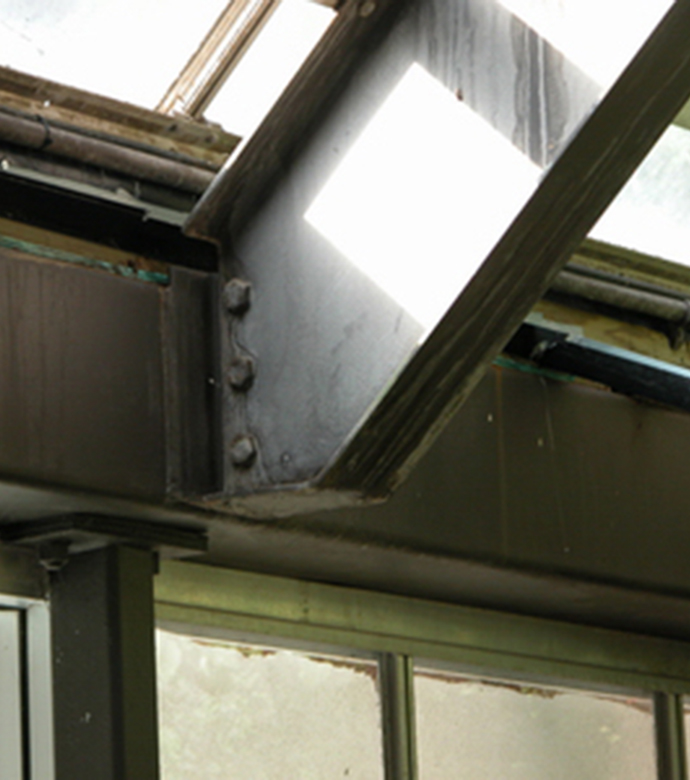High-Performance Polyimide Powder Coatings
materials and coatings
High-Performance Polyimide Powder Coatings (KSC-TOPS-23)
Advanced powder coatings for longer-lasting, improved corrosion control
Overview
NASA Kennedy Space Center seeks partners interested in the further development and commercial application of High-Performance Polyimide Powder Coatings for longer-lasting, improved corrosion control. Through their earlier work with polyimide materials, KSC scientists identified polyimides with much lower melting points than traditional polyimides that were used for insulation. The lower melting points, thermal stability, chemical resistance, and electrical properties of these new polyimides led KSC researchers to develop new polyimide powder coatings that could be used to prevent corrosion. The results of preliminary tests of the coatings and their resistance to salt spray corrosion are very encouraging, and commercial partners are sought for further development.
The Technology
Powder coatings are used throughout industry to coat a myriad of metallic objects. This method of coating has gained popularity because it conserves materials and eliminates volatile organic compounds. Resins traditionally chosen for powder coatings have low melting points that enable them to melt and flow into a smooth coating before being cured to a durable surface. High-performance resins, such as Teflon, nylon, and polyimide, have not been found suitable for use in powder coatings because of their high melting points.
However, KSC's newly developed polyamic acid resins with low melting points can be used in a powder coating. These polyamic acid resins, when sprayed onto metal surfaces, can be cured in conventional powder coating ovens to deliver high-performance polyimide powder coatings. The polyimide powder coatings offer superior heat and electrical stability as well as superior chemical resistance over other types of powder coatings.


Benefits
- Improved corrosion control
- Temperature resistance
- Chemical resistance
- Electrical stability
- Flame resistance
- Long-lasting protection
Applications
- Pipes and other infrastructure components
- Machinery
- Exposed metal parts and structures
- Automobile components
- Bridges
Technology Details
materials and coatings
KSC-TOPS-23
KSC-12808
https://www.powdercoatedtough.com/News/ID/5199/NASA-and-UCF-Collaborate-to-Develop-New-High-Temperature-Powder-Coating
|
Tags:
|
Similar Results

Self-Healing Wire Insulation
Insulation is necessary on electrical wires in order to protect electrical systems from shorting. In high voltage systems such shorting can lead to sparking and fires. Many lives have been lost due to electrical wire insulation failure. Many man hours are also expended in the repair and inspection of electrical wiring in order to attempt to prevent wire failure. Wire insulation with a built in "self-healing" capability would greatly improve the safety of systems containing electrical wiring. Such insulation would require far less inspection and repair time over the lifetime of the system.
Polyimides such as Kapton are an integral part of high performance electrical wire insulation. Traditional polyimides are very inert to solvents and do not melt. A new set of polyimides, developed for use as films for the manual repair of high performance electrical wire insulation, have a low melting point and can be dissolved in special solvents. These properties can be taken advantage of in self-healing polyimide films. Microcapsules containing a solvent soluble polyimide are prepared using industry standard inter-facial or in situ polymerization techniques. These capsules are then incorporated into a low melt polyimide film for use as either a primary electrical wire insulation or as one of several layers of a composite wire insulation. The low melt polyimide film substrate in which the microcapsules are incorporated has good solubility with the solvent used to dissolve the polyimide which makes up the fluid inside the microcapsule. Such a capsule filled insulation, when cut or otherwise damaged, will result in the release of the capsule contents into the cut or damage area. The solvent then dissolves a small amount of the surrounding polyimide insulation but will also begin the process of evaporation. The combination of these two processes allows for excellent intermingling of the healant and the surrounding substrate, resulting in a repair with superior bonding and physical properties.

Polyimide Wire Insulation Repair System
A major limitation of current aerospace wire insulation is that it tends to crack and fray as it ages and is easily damaged. Generally, it is more cost-effective to repair wire insulation than to replace a section of the wire (or bundle) itself. Current repair methods include a tape wrap repair and a heat shrink repair. These methods have a number of drawbacks: susceptibility to vibration, fluid intrusion, and other mechanical stresses. The repair patch/material can loosen or separate, exposing the bare metal conductor or opening the polyimide insulation to more damage at the interface.
The technology developed by KSC is a flexible polyimide film patch (either wrap or sleeve) that is heated with a custom heating tool to melt, flow, and cure the film. The new technology results in hermetically sealed, permanent repairs that are much more flexible and less intrusive than repairs made using current practices. The repair remains flexible after application, has no limit in length or bend radius, and retains the high-temperature exposure of the original polyimide insulation. Extensive testing by NASA and NAVAIR has demonstrated that these repairs comply with industry standards for tensile strength, electrical resistivity, voltage breakdown, solvent resistance, and flammability. This system is adaptable and may also be used on larger-gauge wiring, as well as flat-ribbon wire harnesses and twisted shielded wires.

Self-Healing Low-Melt Polyimides
There are multiple space-related systems that can benefit from high performance, thin film, self-healing/sealing systems. Space vehicles and related ground support equipment can contain miles of wire, much of which is buried inside structures making it very difficult to access for inspection and repair. Space-based inflatable structures, solar panels, and astronauts performing extra-vehicular activities are subject to being struck by micrometeoroids and orbital debris. Self-healing or sealing layers on inflatables, solar panels and spacesuits would increase the safety and survivability of astronauts as well as the survivability and functionality of inflatables and solar panels. Self-healing insulation on wiring would greatly improve the reliability and safety of systems containing such wiring and reduce inspection and repair time over the lifetime of those systems. This technology combines the use of a self-sealing low melt, high performance polyimide film that exhibits the ability, when cut, for separated edges to slowly flow back together and seal itself, with the options of a laminate system and the inclusion of healant microcapsules that, when broken, release healant which can then additionally assist in the healing process. Combinations of the healing approaches can be enabling to the healing process proceeding at a much greater rate and dual mode healing approach can also allow for healing of a larger area.

Smart Coating for Corrosion Detection and Protection
The smart coating is based on the controlled release of corrosion inhibitors and indicators from specially formulated microcapsules and particles pioneered by NASA (patent allowed). The coating detects corrosion in its early stages, inhibits it, and/or repairs the coating. The onset of corrosion triggers the release of compounds that indicate and inhibit corrosion. Mechanical damage to the coating triggers the release of film-forming compounds to repair the damage. In practice, the corrosion-responsive microcapsules detect the chemical changes that occur when corrosion begins and respond by releasing their contents. A corrosion indicator will identify the affected region with a color change, and healing agents and corrosion inhibitors help mitigate the corrosion.
The microcapsules can be tailored for incorporation into different coating systems. This multifunctional coating system will reduce maintenance cost and improve safety by preventing catastrophic corrosion failures. The coating can reduce infrastructure life cycle costs by extending the life of corrosion-susceptible structures and components, reduce inspection times of structures, and reduce the level of repair for corrosion-affected areas.

Oil-Free Lubricants
In applying PS400 using the plasma spray-coating process, a 0.010 inch layer is deposited onto a metal surface. This composite coating often includes a metallic-based binder, a metal-bonded hardener, a high-temperature lubricant, and/or a low- temperature lubricant. PS400's improved metallic-based binder alloy greatly increases the structural strength and durability of the composite with respect to the operating temperature and the bearing load, and provides superior dimensional stability. PS400's metal-bonded oxide hardening agent provides additional hardness, wear resistance, and thermal stability, while also exhibiting a low coefficient of friction when used in sliding contacts. It is also significantly less expensive in terms of both acquisition and grinding processes.
Depending on the desired environment, high- and low-temperature lubricants may be added to the composite coating. The preferred high-temperature lubricant is a metal fluoride and the optional optional low-temperature lubricant is composed of metals, such as silver or copper, that are soft enough to provide lubrication at low temperature while maintaining oxidation resistance with a sufficiently high melting point. These qualities permit the materials to be used over a broad temperature range. Once the spray coating has been applied, the metal surface is ground and polished to produce a smooth, self-lubricating surface before use. Unlike some coatings that must be diamond-ground, PS400 is readily ground with a substantially less expensive abrasive, such as silicon carbide. This grinding process generally yields a coating thickness of 200 to 400 micrometers.
In instances when a coating is not convenient or possible, powder metallurgy techniques using PM400 can be used to make freestanding self-lubricating components such as bushings and wear plates.


